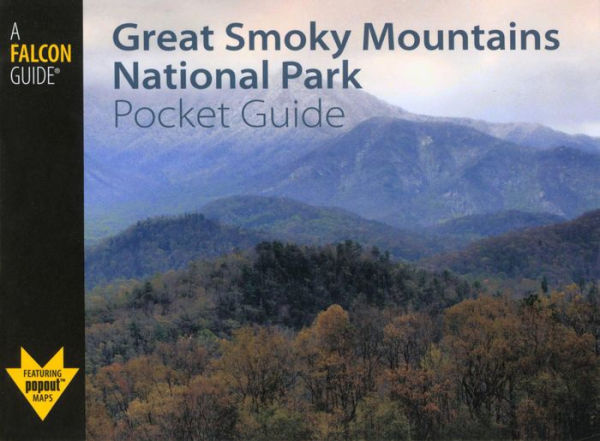
Great Smoky Mountains National Park Pocket Guide
96
Great Smoky Mountains National Park Pocket Guide
96Hardcover(First Edition)
-
PICK UP IN STORECheck Availability at Nearby Stores
Available within 2 business hours
Related collections and offers
Overview

Product Details
| ISBN-13: | 9780762748068 |
|---|---|
| Publisher: | Rowman & Littlefield Publishers, Inc. |
| Publication date: | 05/13/2008 |
| Series: | Falcon Pocket Guides Series |
| Edition description: | First Edition |
| Pages: | 96 |
| Product dimensions: | 3.80(w) x 5.10(h) x 0.30(d) |
About the Author
Read an Excerpt
From the top of Clingmans Dome, the third highest mountain peak in the eastern United States, they stretch to the horizon in every direction—rows and rows of thickly forested ridgelines so covered with hardwoods, spruce and fir that the foliage looks seamlessly impenetrable—and then, as each ridge falls away just a bit from the one before it, its deep greens fade into blues and grays that blend the bursting foliage into the range's characteristic haze. These are the Great Smoky Mountains, named "Smoky" originally for the natural pastel veil of humidity produced by so much vegetation thriving in one place, and their blue-green shroud presents more of a sense of peace than of mystery—a reminder to rejuvenate, to leave our desks and cubicles and even our cars behind and surround ourselves with the bounty that this Tennessee-North Carolina border park is so ready to provide. More than nine million people find their way to Great Smoky Mountains National Park every year, to drive the winding Newfound Gap Road that crosses the central ridgeline or to walk hundreds of miles of trails that lead far away from the bluster of cities and highways. Exploring the Smokies can mean a long hike into a woods where the only sounds are the "Teakettle, teakettle, teakettle" call of the Carolina wren and the burble of rushing river water, tumbling over rocks and swirling between boulders on its way to the valleys below. Your exploration may take you out into the middle of one of these rivers with a fishing rod and reel, angling to catch the trout that are so plentiful in these merry waters. You may hike in search of one of the park's forty most popular waterfalls, or you may take to the backcountry to find the cascades that only a handful of people ever see—and whether you're in the outlands or the front country, you may finish your day in a campsite where you can see thousands of stars wink in the darker-than-dark night sky. This is hikers' nirvana, with inclines that challenge even the most experienced trekkers—but without the intimidating jaggedness of the western mountains or their equilibrium-stealing altitude. Uphill slopes lead to vistas that make you long to conquer the next ridgeline and the next after that, while gentle descents into valleys bring you close to the park's famous wildlife: white-tailed does leading spotted fawns through wooded glens, splendid male elk foraging for their favorite young shoots in open fields, and the park's most sought-after large animals, the black bears, ambling through forests while their young cubs scurry along fallen logs and up into the trees. Nestled between the mountain peaks and the cove woodlands are the carefully preserved remains of villages that flourished here before and during the boom days, when logging felled millions of trees and industry clear-cut the landscape. Most of the people who lived in what is now Great Smoky Mountains National Park respected the land and used it only as a personal resource, harnessing water power to grind corn and harvesting a few trees to build homes while they grew crops to sustain their families. Their homesteads remain in Cades Cove, Oconaluftee and Cataloochee Valley, testaments to a time when man and nature could live in cooperation and understanding. When logging threatened to wipe out these majestic forests, a core group of area residents led by writer Horace Kephart banded together in the 1920s to rescue this state borderland from the brink of destruction. It took the efforts of many organizations and individuals to restore the area to its original state—and today, thanks to their work, Great Smoky Mountains National Park now draws the largest number of visitors each year of all 57 National Parks, more than the Grand Canyon and Yosemite National Park combined. The delightful union of natural beauty with hundreds of recreational choices, the abundant wildlife, the changing landscape that bursts with new color and life from one season to the next, and the astounding opportunity to receive this natural treasure at no charge—all of these make the Smokies the nation's number one destination for nature-loving vacationers, sparking their sense of adventure and taking them deep into one of the loveliest wilderness areas in America.



